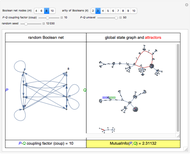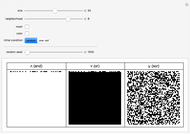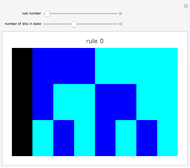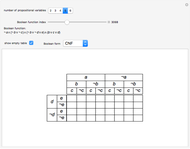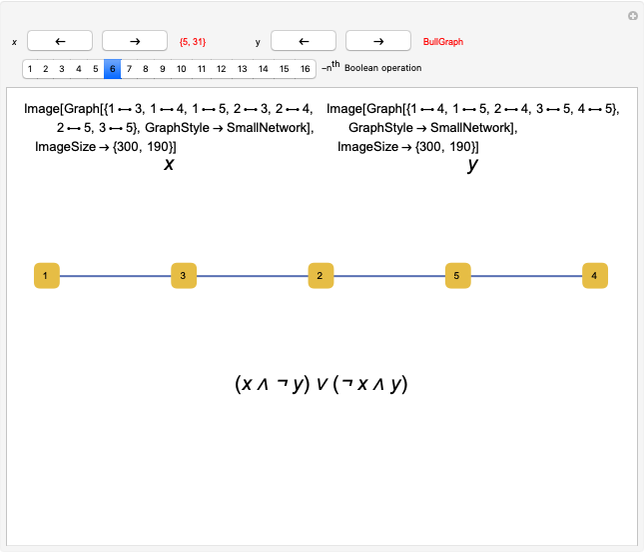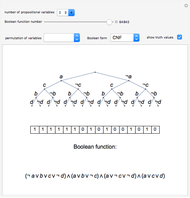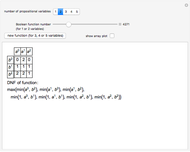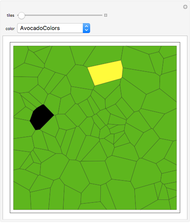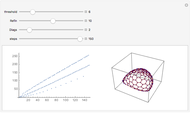Integrated Information in Partitioned Boolean Nets

Requires a Wolfram Notebook System
Interact on desktop, mobile and cloud with the free Wolfram Player or other Wolfram Language products.
An  Boolean net is a sequential, synchronous, dynamical system that can be represented by an
Boolean net is a sequential, synchronous, dynamical system that can be represented by an  -node directed graph. Each node
-node directed graph. Each node  is associated with a Boolean function
is associated with a Boolean function  of
of  Boolean arguments that defines the node value at each clock tick. The arguments of
Boolean arguments that defines the node value at each clock tick. The arguments of  are provided by the nodes connected to
are provided by the nodes connected to  by the incoming arcs. You can define the number
by the incoming arcs. You can define the number  of nodes of the net, the arity
of nodes of the net, the arity  of the functions, and the state and the specific function of each node; you can select a partition of the node set and choose between two types of analysis: "cause" or "effect". Based on these settings, the Demonstration computes both global and partition-dependent information as defined in Integrated Information Theory v2.0 (see details below).
of the functions, and the state and the specific function of each node; you can select a partition of the node set and choose between two types of analysis: "cause" or "effect". Based on these settings, the Demonstration computes both global and partition-dependent information as defined in Integrated Information Theory v2.0 (see details below).
Contributed by: Tommaso Bolognesi (April 2019)
Open content licensed under CC BY-NC-SA
Snapshots
Details
This Demonstration implements the basic model, concepts and informational measures of Integrated Information Theory, and deals both with the cause and the effect viewpoints. Cause analysis [1] is concerned with the Boolean net state distribution that immediately precedes the current global state  selected by the user, denoted "
selected by the user, denoted " ". Effect analysis [2], conversely, looks at the distribution that immediately follows that state [2], denoted "
". Effect analysis [2], conversely, looks at the distribution that immediately follows that state [2], denoted " ". The computed "global cause information" is defined as the Kullback–Leibler divergence
". The computed "global cause information" is defined as the Kullback–Leibler divergence  of distribution
of distribution  relative to the uniform distribution "unif", while the "global effect information" is
relative to the uniform distribution "unif", while the "global effect information" is  . The "integrated cause/effect information" depends both on the reference state and on the chosen partition of the node set: it quantifies the information produced by the whole system above and beyond the information produced independently by its parts, and is also expressed by a Kullback–Leibler divergence (see [1, 2]). This Demonstration does not make use of the earth mover distance between distributions, as adopted in Integrated Information Theory 3.0.
. The "integrated cause/effect information" depends both on the reference state and on the chosen partition of the node set: it quantifies the information produced by the whole system above and beyond the information produced independently by its parts, and is also expressed by a Kullback–Leibler divergence (see [1, 2]). This Demonstration does not make use of the earth mover distance between distributions, as adopted in Integrated Information Theory 3.0.
This Demonstration can be used, in particular, for verifying the ("cause") informational measures indicated in Figures 1 through 3 from [1], namely:
Figure 1: three AND nodes entering state 001. Global cause info=3 (denoted  in the paper).
in the paper).
Figure 2A: two COPY nodes entering state 01. Global cause info=2.
Figure 2B: three AND nodes entering state 000. Global cause info=1.
Figure 2C: three Boolean nodes always 1 (True), entering state 111. Global cause info=0.
Figures 3A+B: four COPY nodes entering state 0110. Global cause info=4. Integrated cause info for partition  (denoted
(denoted  in the paper, where
in the paper, where  is the minimum information partition).
is the minimum information partition).
Figures 3A+C: four COPY nodes entering state 0110. Global cause info=4. Integrated cause info for partition  (denoted
(denoted  in the paper, where
in the paper, where  ).
).
References
[1] D. Balduzzi and G. Tononi, "Integrated Information in Discrete Dynamical Systems: Motivation and Theoretical Framework," PLoS Computational Biology, 4(6), 2008 e1000091. doi:10.1371/journal.pcbi.1000091.
[2] M. Oizumi, L. Albantakis and G. Tononi, "From the Phenomenology to the Mechanisms of Consciousness: Integrated Information Theory 3.0," PLoS Computational Biology, 10(5), 2014 e1003588. doi:10.1371/journal.pcbi.1003588.
Permanent Citation







